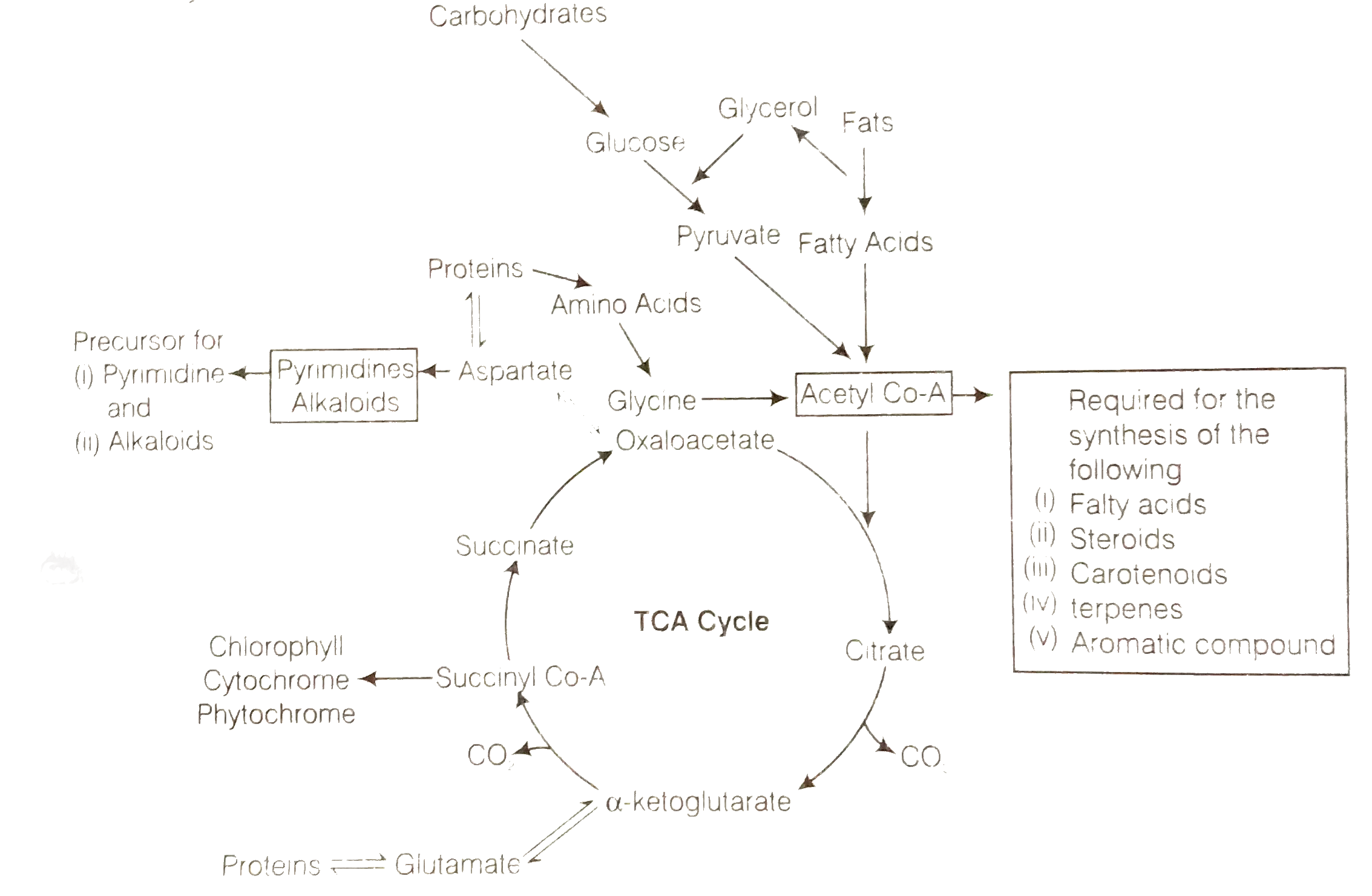Resipratory pathway is believed to be a catabolic pathway. However, nature of TCA cycle is amphibolic. Explain.
Text Solution
Living cells obtain energy through respiration. It is the process of generating energy in the from of ATP molecules by breaking down food molecules like glucose, fats etc.
The process starts with glycolysis which occurs in cytoplalsm producing pyruvic acid. It is then converted to actelyl Co-A which enters mitochondrial matrix. This intiates the tricarboxylic acid cycle

This cycle is said to be amphibolic because many intermediate compounds formed in this cycle act as precursors for biosynthesis of many important bioligical molecules, i.e., co-enzymes, vitamins hormones, Besides this, many molecules, i.e., fatty acids, aminoacids, co-enzymes etc. can enter this cycle directly
Acetyl Co-A is releated to synthesis and breakdown of fatty, acids, steroids, carotenoids terpenes and aromatic compounds. α ketoglutrate and oxaloacetate are now materials for synthesis fo amino acids like glutamate and asparate and also pyrimidnes and alkaloids. Succinyl froms pyrrole compounds like cytochrome and chlorophyll.
So, it is the cycle where both breakdown and synthesis reactions keep on going simultaneously. the following figure shows interrelationship among netabolic pathway showing respiration mediated break down of different organic molecule.
|
Updated on:21/07/2023
Topper's Solved these Questions
- BOOK - NCERT EXEMPLAR ENGLISHCHAPTER - RESPIRATION IN PLANTS EXERCISE - LONG ANSWER TYPE QUESTIONS5videos
RESPIRATION IN PLANTS
- BOOK - NCERT EXEMPLAR ENGLISHCHAPTER - RESPIRATION IN PLANTS EXERCISE - VERY SHORT ANSWER TYPE QUESTIONS7videos
RESPIRATION IN PLANTS
- BOOK - NCERT EXEMPLAR ENGLISHCHAPTER - PLANT KINGDOMEXERCISE - LONG ANSWER TYPE QUSTIONS5videos
PLANT KINGDOM
- BOOK - NCERT EXEMPLAR ENGLISHCHAPTER - STRUCTURAL ORGANISATION IN ANIMALSEXERCISE - long answer type questions5videos
STRUCTURAL ORGANISATION IN ANIMALS
Similar Questions
Knowledge Check
- Question 1 - Select One
An amphibolic pathway is
ATCA cycleBCalvin cycleCTerminal oxidationDElectron transport chain. - Question 2 - Select One
An amphibolic pathway is
AKreb's cycleBCalvin cycleCETCDNone - Question 3 - Select One
Anabolic pathways….a….. energy and catabolic pathways……b…. energy
Aa-consume, b-releaseBa-release,b-consumeCa-consume,b-consumeDa-release,b-release
An amphibolic pathway is
View SolutionDiscuss “The respiratory pathway is an amphibolic pathway.”
View Solution'Respiratory pathway is an amphibolic pathway'. Comment upon the statement.
View SolutionDiscuss: 'The respiratory pathway is an amphibolic pathway'.
View SolutionAssertion : Respiratory pathway is considered as an amphibolic pathway
Reason : It involves both anabolism and catabolism.View Solution

